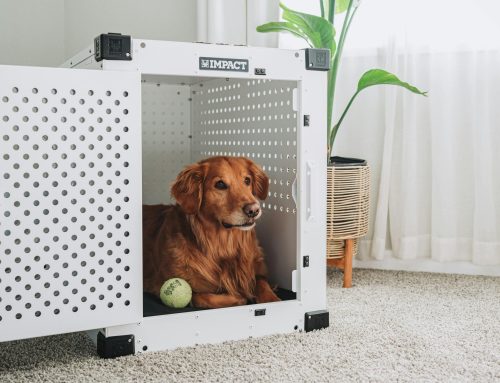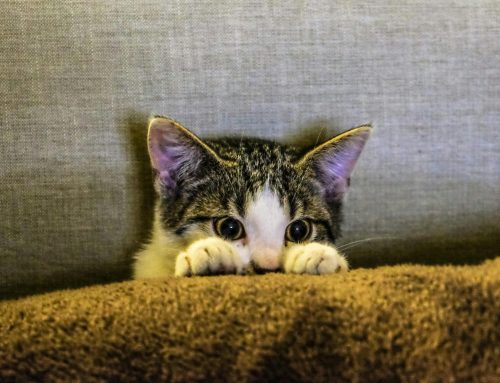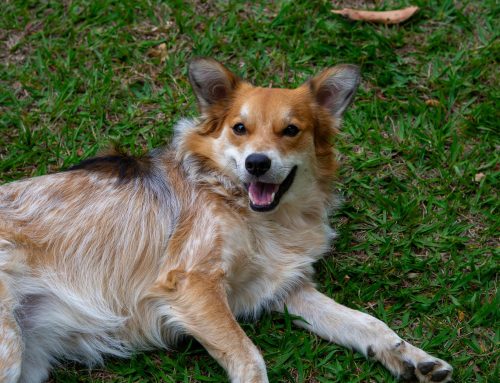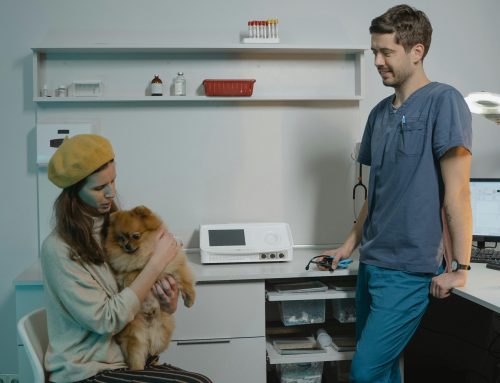Bringing Home a New Puppy

Bringing a new puppy home is one of the most exciting things you can do. Here is a short checklist to make sure you have everything you need to make your new family member feel right at home.
Food and Water:
This may seem like an obvious item on your checklist, but it is still worth considering. Depending on the breed of dog, most puppies are still growing for the first 1-2 years of their life. During this time, they should be on a diet specifically designed for growth. A food labeled for puppies usually has the correct balance of nutrients and minerals to accommodate your puppy’s needs. To avoid an upset stomach, it is best to gradually transition your puppy to their new diet over about a 1-week span of time. To help with this, ask the breeder or rescue who was caring for your puppy to send a small bag of the food they have been eating with you.
Bowls:
Separate bowls for food and water are also part of the essentials. The best bowls are sturdy and constructed of an easily washable material such as stainless steel or ceramic. We love bowls that have rubber on the bottom to provide traction. We also recommend avoiding plastic bowls. They may harbor bacteria in the grooves and scratches on the surface and be harder to clean. Depending on the size of your home and number of other pets, it may be best to have multiple sources for water. A good rule of thumb is to have one more bowl than the number of pets you have in the house.
Bed:
Even if you intend to allow your new puppy to sleep on the bed or furniture with you, it is still best to provide them with a bed and/or blankets of their own. Puppies sleep quite a bit and it’s nice for them to have a portable bed that you can move from room to room with you. It’s a good idea to keep them close to you during these early days. This will also provide them a comfortable place to rest when there is company over. In fact, some pet parents will teach their dogs a command instructing them to go lie down on the bed. This gives your dog a safe space to retreat to that is relaxing and familiar when needed.
Gates and Play Pens:
You have heard of baby proofing the house. A similar type of planning is beneficial when adding a puppy to your family. It may be safest to set up gates throughout the home. The goal is to keep your puppy from areas where they may harm themselves or create some damage to your home. We all know puppies are explorers and sometimes their curiosity gets the better of them. Wire puppy play pens provide the same safe space for a puppy to play, but have the advantage of being portable.
Crates:
Dog crates provide a puppy with a space that is all their own. The best crates are large enough for your puppy to get up, move around and stretch out. However, an overly large crate may slow the house breaking a bit by encouraging your puppy to use his crate for potty, then comfortably move to the other end. We encourage making the crate an enjoyable place for your puppy. Ensure your puppy can easily see out of the crate. The addition of a cozy bed, toys and even treats will help your four-legged family member feel right at home.
Leash and Harness:
Your puppy will be growing rapidly, so the first leash and collar/harness does not have to be the style you stick with. In general, the harness or collar should fit comfortably, but not be so loose that your puppy can slip out of it. The leashes should be sturdy and non-retractable. Despite their popularity, we see a lot of dogs injured while on a retractable leash. It may even be best to purchase two leashes-one that is shorter and allows for a little better control while walking through crowded spaces, and one that is longer for the back yard or places where you feel at ease letting your puppy have a little more freedom.
Toys and Enrichment:
This may be one of the most fun parts of shopping for your puppy. Toys provide important enrichment for healthy mental development as well as an appropriate outlet for all that extra energy. You should have a few toys in the house before your new family member arrives. It is also fun to take your dog shopping with you to get an idea of what toys appeal to them. If your puppy is still getting their vaccines, make sure to check with your veterinarian before taking them to a crowded store. We like to have at least 1 or 2 toys that are rubbery and resilient for teething time. We also love and recommend some of the newer puzzle treats that allow you to hide treats. These encourage thinking and engagement and will keep your puppy occupied. When first starting, providing a variety of toys will help you learn your puppy’s preferences. Always double check that the toys you buy are large enough that they cannot be easily swallowed by an overly excited puppy.
Training Tools:
Small, low calorie treats are very useful for the first few months of puppy training. Alternatively, you can use some of your pet’s kibbles for incentive during training. The best training starts early. Whatever other tools you are using during the training process such as clickers, kongs and special harnesses can be purchased early. We’re big believers in positive reinforcement and like to see pets rewarded for doing a good job.
Grooming:
Puppies are notoriously playful and curious, and sometimes that results in them getting a little dirty. Make sure you have some dog shampoo, brush, ear cleaner and other grooming tools that you can use to keep them clean and healthy. This is also a great time to get your puppy used to some of the grooming activities you may need to perform later, such as nail trimming and brushing of teeth. Picking up a few of these products to assist with this is also a good idea.
Home Cleaning Products:
Even the most readily house-broken puppies may still have an accident or two before they learn the routine. Enzymatic cleaners work best for removing pet odors. It’s always nice to be prepared just in case.
Bags:
Your neighbors will greatly appreciate this item being on your checklist. We also know that picking up feces from the yard, decreases the odds that your puppy with get intestinal parasites. and they may also reduce the temptation for your puppy to pick up some bad habits with any feces left in the yard.
Veterinarian:
If you do not already have a veterinarian, a good time to start looking is actually before you pick up your new family member. Most puppies are adopted between 8 and 12 weeks of age. This means that they will typically be in need of additional vaccines and parasite prevention within the first few weeks of coming home. Even if your new puppy is not due for vaccines for several weeks, most breeders will recommend that you visit a veterinarian within a few days of adopting your puppy. This allows us to examine them for any birth defects or other concerns that we may need to address sooner rather than later. By planning ahead, you give yourself plenty of time to find a veterinarian that is the right fit for you and your pet rather than having to make a hasty decision because vaccines are due or your puppy has become sick.
If this will be your first time owning a puppy, or it has been a long time since you have had a young dog in your house, it may even be beneficial to set up a consultation with the veterinarian before adopting your dog. Many of our clients have requested appointments like this to better prepare themselves. Your veterinarian can guide you on much of what you will need to know before bringing your new family member home. They can make recommendations on nutrition, toys, training, vaccine needs based on lifestyle, and even walk through some of the unique conditions to watch for based on the breed of dog you are adopting. In addition to learning about the medical and behavioral needs of your four-legged family member, you will also be able to better plan for the financial and scheduling commitments involved. After the consultation, our clients tend to feel much more confident moving forward with the adoption.
Other Optional Items for Your Checklist:
Outfits and an Instagram Account:
Let’s face it, our pets are a part of our family and for many of us they are our children. Despite the occasional side eye, dressing them up has definitely become a trend that extends throughout the year. Also, we love following your new pets on Instagram and rockin’ a cute new doggy costume is a fast way to get them instafamous.
TL;DR Version
-Puppy food and water
-Metal or ceramic bowls
-Dog bed
-Gates or pen
-Crate of appropriate size
-Leash and harness
-Toys
-Training treats and toys
-Shampoo and grooming tools
-Home cleaning products (accidents happen)
-Poop bags
-Veterinarian for your puppy






Leave A Comment